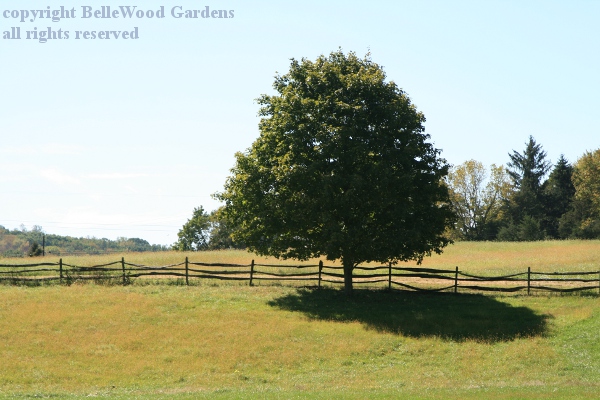
.
If you have any comments, observations, or questions about what you read here, remember you can always Contact Me
All content included on this site such as text, graphics and images is protected by U.S and international copyright law.
The compilation of all content on this site is the exclusive property of the site copyright holder.
Just a day ago it was the equinox. You wouldn't know it today, with the sun beating down from a clear blue sky. It may feel as if it is still summer but nonetheless it is time for the autumn plowing, seeding winter wheat in the South Field.

Strong sun and deep shade. Sheep are under a different tree.
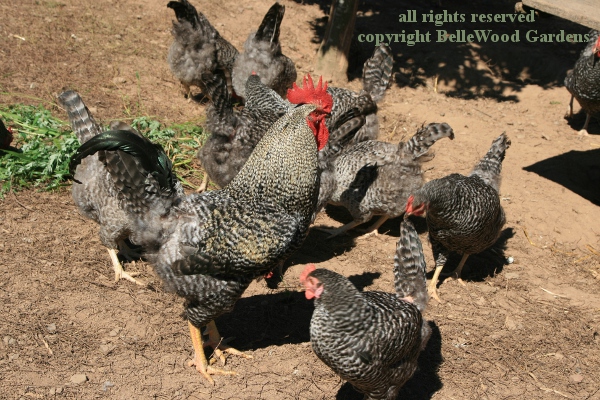
The flock of barred Plymouth rock hens and their lordly rooster
are excitedly feasting on some weeds from the vegetable garden.
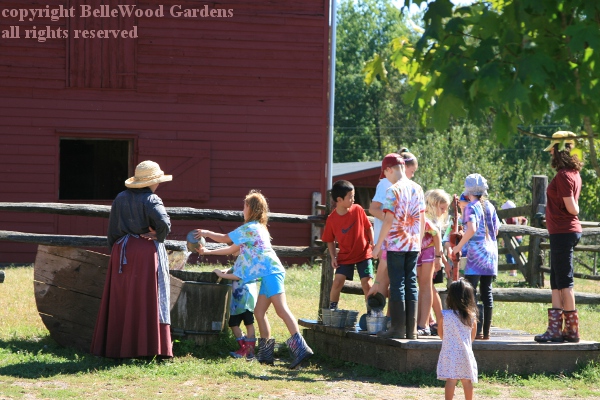
Under supervision, the junior farmers are enjoying some water
play. Actually, they are filling the water trough. Fun in this weather.
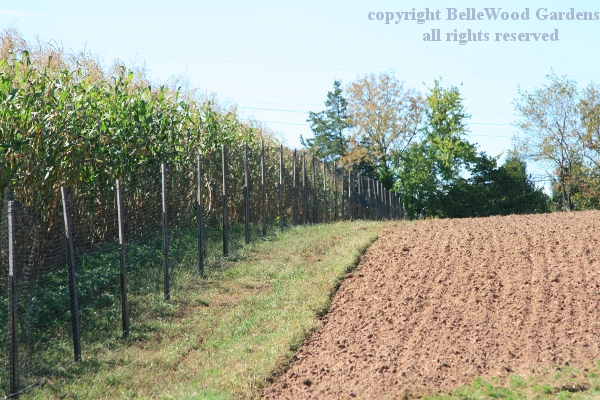
The field has been plowed, manure spread, then harrowed.
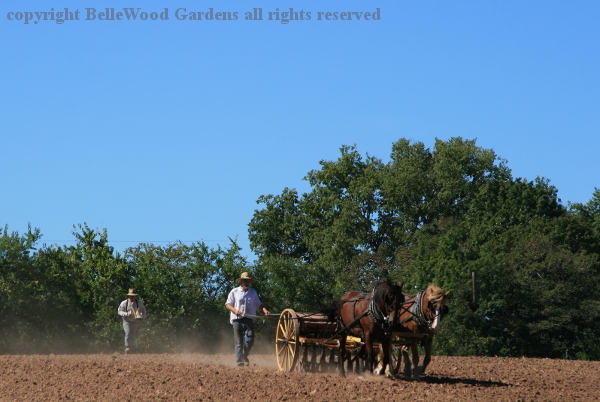
The hard red wheat that's being sown in a modern variety, but one that looks like the old type - long stalks and awns on each kernel. The stalks will be used for straw, and the awns are unpalatable to deer who would otherwise forage on the crop. The horse drawn seeder is set up for sowing wheat. The directions are on a chart pasted inside the device. But the farm doesn't have the corresponding information chart for pasture grass. That's what the man with the hand seeder is planting.
The wheat will be harvested next year, and then the South Field will produce hay for the next three years. They also sow red clover. Clovers add nitrogen to the soil, reducing the need for bought-in fertilizer. Red clover is a biennial, only grows for two years - helps the wheat and the first year as pasture. That's good, because green clover is high in protein, good for pregnant, nursing, young growing animals. Since Howell Living History Farm doesn't keep dairy animals the clover hay is too rich for the draft horses and oxen.
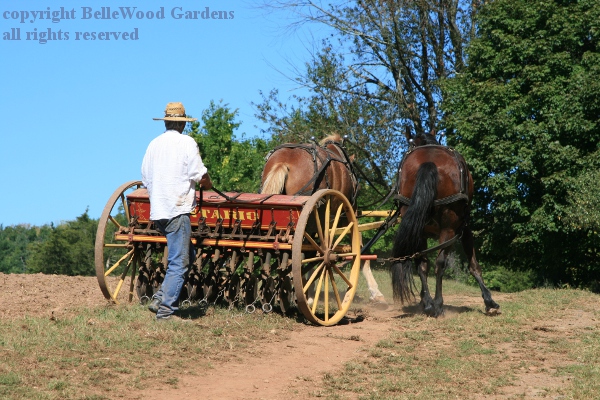
Time for the sideways shuffle, turning the team at the edge of the field.
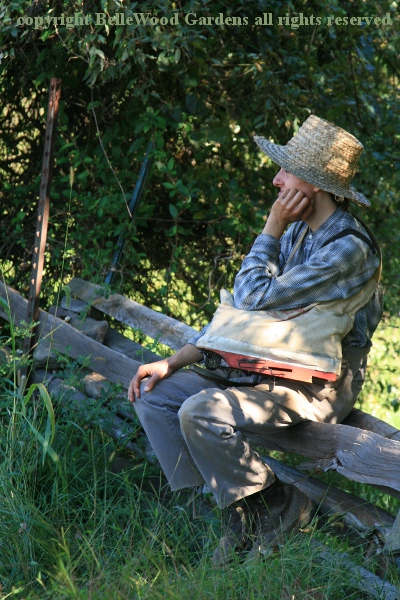
This young man is waiting his turn, following
the horses, spreading seed for pasture grass.
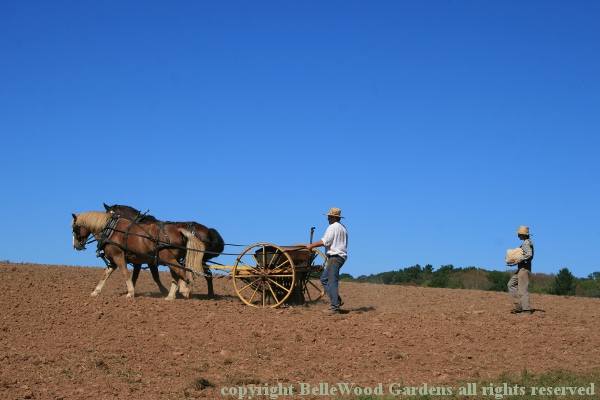
The horses are in good condition, having been working - plowing, haying, logging - since Spring. It takes about an hour to work one acre. They'll work for about 3 hours, have an hour rest at mid-day, with hay, some grain, water. Then work again in the afternoon. There are two more teams, drowsing in the barn, that could be swapped out in really hot weather. Slow and steady does it. The work will be there. Until it is done.
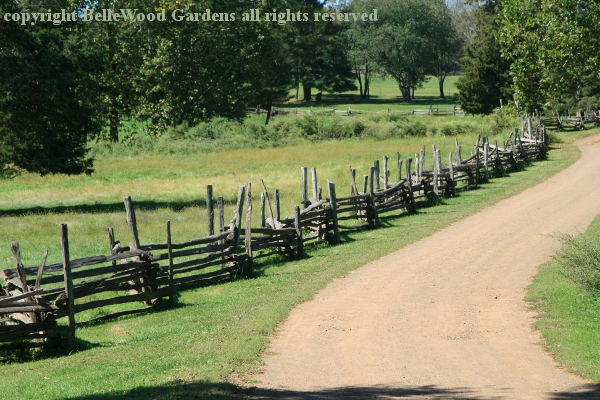
Another interesting day on the farm.
Back to September 2017
Back to the main Diary Page